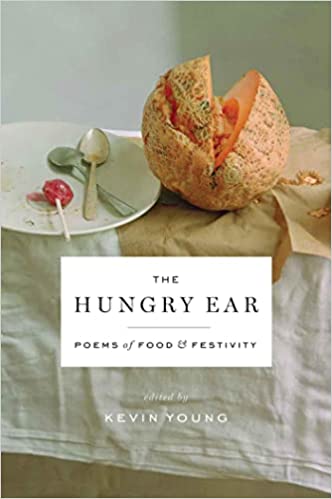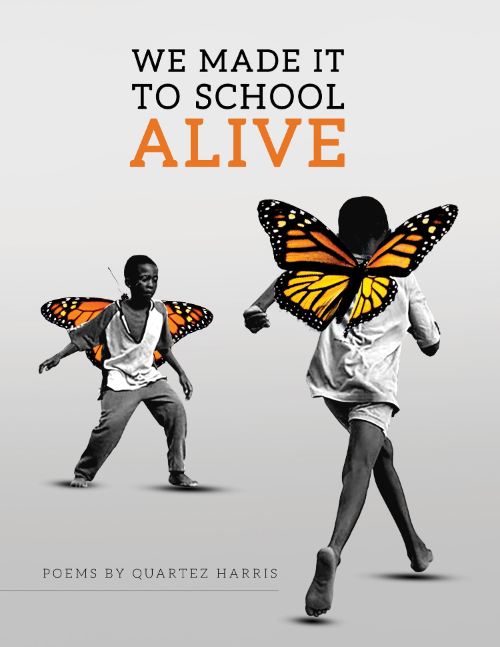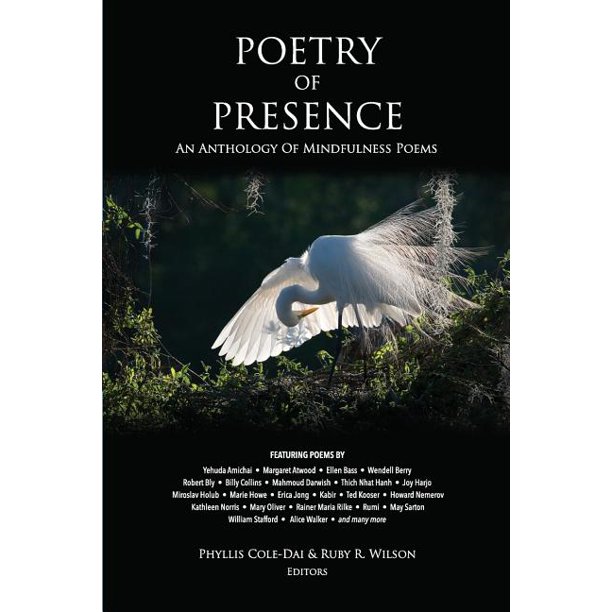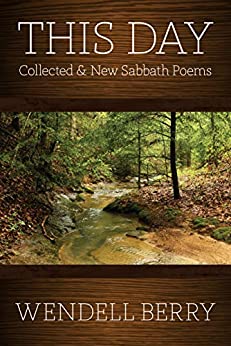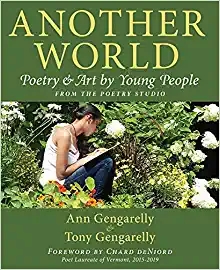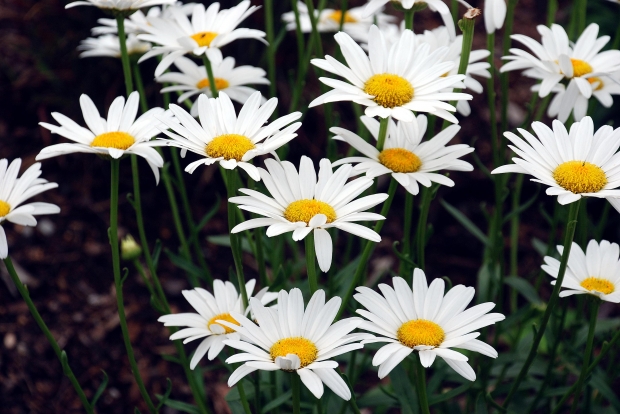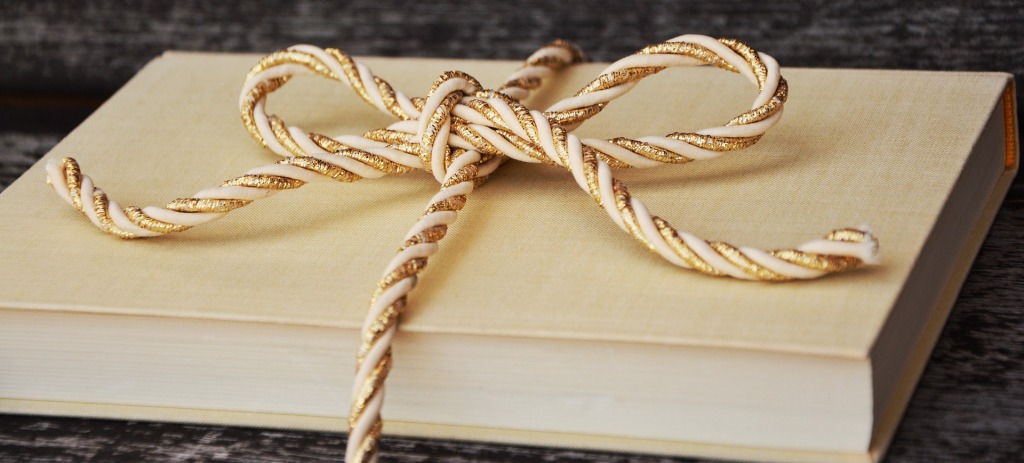
You may have never given a poetry book as a gift. Most people have never bought a poetry book for themselves either. Yet a wealth of excellent poetry awaits, with more books coming out every day, each one capable of creating new poetry lovers. When I give a poetry book, whether to a poetry lover or a doesn’t-really-read-poetry friend, I like to pair the book with a related present. Here are a few suggestions based on books I’ve read recently. (Many are anthologies, a great way to entice readers.) Let these ideas inspire your own ideas. And please share in the comments what gift you’ve paired with a book, or what you’d like to receive in tandem with a book.
&&&&&
The Hungry Ear: Poems of Food and Drink edited by Kevin Young (indie link) is a nourishingly hearty 336 page anthology with works by Elizabeth Alexander, Tracy K. Smith, Martín Espada, and others. It’s also perfect to pair with food-related gifts. Consider gifting it with something flavorful, like locally roasted coffee or spiced nuts. Or really step it up with a legacy gift like these salt boxes made from trees milled and shaped by the crafter. If you have the time, you might instead gift it with something you’ve cooked or baked yourself.
&&&&&
Maggie Smith’s Goldenrod (indie link) explores parenthood, nature, and memory with a uniquely sharp tenderness. Somehow I think a picture frame goes well with this gift, a way of honoring what’s dearest to your recipient.
&&&&&
Ohio’s current Poet of the Year, Quartez Harris, is driven by his work as a second-grade teacher as well as by his students’ experiences with gun violence, poverty, and racism. I’d pair We Made It To School Alive with a gift certificate, maybe one that allows the recipient to give toys, games, or books purchased from black-owned businesses like Kido, Little Likes Kids, Paper Play and Wonder, or Puzzle Huddle to a loved child or to donate them to an area daycare, school, or afterschool program
&&&&&
How To Love The World: Poems of Gratitude and Hope (indie link) edited by James Crews is a deep refreshing sigh in book form. These poems are antidotes to hurry, worry, and divisiveness. There are many gifts that could accompany this anthology but it occurs to me that Darn Tough, the guaranteed-to-last U.S.-made socks, are perfect for cozying up at home as well as exploring the world. The way poetry is, too, although without the socks’ airtight guarantee.
&&&&&
Ada Limón’s Bright Dead Things: Poems (indie link) intimately connects the reader to place and memory with what I can only describe as courage flung wide open. I like to imagine an unexpected gift idea sparked by the title, like a 3D printed skull planter made from eco-friendly bioplastic by a woman-owned business. Maybe tuck a hardy succulent in with your gift…
&&&&&
U.S. Poet Laureate Joy Harjo gathers the work of more than 160 poets in this historically comprehensive anthology of Native poetry, titled When the Light of the World Was Subdued, Our Songs Came Through (indie link). The works represent nearly 100 indigenous nations including current poets such as Natalie Diaz, Tommy Pico, and Layli Long Soldier. You might pair this gift with hawthorne jam or wild rice mix from Red Lake Nation Foods, candy clusters from Bedré Fine Chocolate, or use the Native Products Directory to purchase goods from other Native and First Nations entrepreneurs.
&&&&&
Poetry of Presence: An Anthology of Mindfulness Poems (indie link) edited by Phyllis Cole-Dai and Ruby R. Wilson, is 252 pages of peace. Anything that speaks to you of mindfulness is a perfect pairing. Each time I dip into this collection I feel cleansed and more whole. Maybe a handmade bar of soap from a local shop or one of the literary goats milk soap bars from The MacBath shop.
&&&&&
In The Shape Of A Human Body I Am Visiting On Earth: Poems From Far and Wide (indie link) edited by Ilya Kaminsky, Dominic Luxford, and Jesse Nathan opens on every page to stirringly memorable poetry, both old and new, from around the world. World poetry is wide open to gift possibilities. I’m a staunch supporter of Kiva.org which also has a storefront with products handmade by Kiva microlending clients with plenty of fine offerings.
&&&&&
Black Girl, Call Home (indie link) by Jasmine Mans is a tribute to her mother and an evocation of home wherever it is found. Mans speaks to feminism, trauma, and growing up as a young, queer Black woman. It reads like music to me, so I’d pair it with tickets to a show at a local venue, with headphones, or with a Spotify gift card.
&&&&&
Woman with a Fan: On Maria Blanchard (indie link) offers Diane Kendig’s vividly intelligent poems and essays in response to Spanish painter Maria Blanchard, whose art has long been overlooked due to sexism and ableism. It would be fun to pair this gift with a Spanish wine, spices, or olive oil bought from a local shop or online from La Tienda.
&&&&&
The poems in Wendell Berry’s This Day: Collected & New Sabbath Poems (indie link) rise from the poet’s deep connection to the land and its influence on his faith, politics, and relationships. As he says, “I believe in what I stand on.” I’d pair this with a sturdy gardening implement like a good trowel or maybe the wondrous delight of a mushroom-growing kit.
&&&&&
Sandra Lim’s The Wilderness (indie link) maps the inner and outer selves with an evocative and philosophical, well, wildness. For some reason it occurs to me that it pairs well with a magnifying glass or another reminder to really look, up close, at what’s around us.
&&&&&
Rikki Santer’s new collection, Stopover (indie link) is inspired by Rod Serling’s classic and unforgettable Twilight Zone series. You might pair it with an Imagine If You Will t-shirt or a Twilight Zone pint glass.
&&&&&
Another World: Poetry and Art by Young People from The Poetry Studio, (indie link) edited by Ann and Tony Gengarelly, is an inspiring anthology for readers of any age. “These students’ poems and art … ring of truth in a time of lies,” says Young People’s Poet Laureate, Naomi Shihab Nye, “We need them.” I’d pair this gift with an eco-friendly, endlessly reusable Rocketbook notebook which “writes” like paper on wipe-clean pages yet can send your notes directly to cloud services. Or maybe with jewelry made out of plastic drawn from ocean waste.
&&&&&
If you’re still reading, let me mention two of my own books. I was named 2019 Ohio Poet of the Year on the strength of my book Blackbird. (indie link) Each book sold is also a donation to the Medina Raptor Center. Although the poems range far from the topic of birds and on to subjects as unusual as cow pastures, dictionaries, to-do lists, and astrophysics –you might pair it with a gift of birdseed or a homemade birdfeeder like these birdseed outdoor ornaments. My most recent book is Portals (indie link) with poems seeking connection between our inner and outer worlds. To me this book pairs well with the quiet light cast by beeswax candles. I can recommend candlemaker Maribeth Moser whose etsy shop offers simple as well as whimsical candles. One of my favorites is her fern patterned pillar candle.
